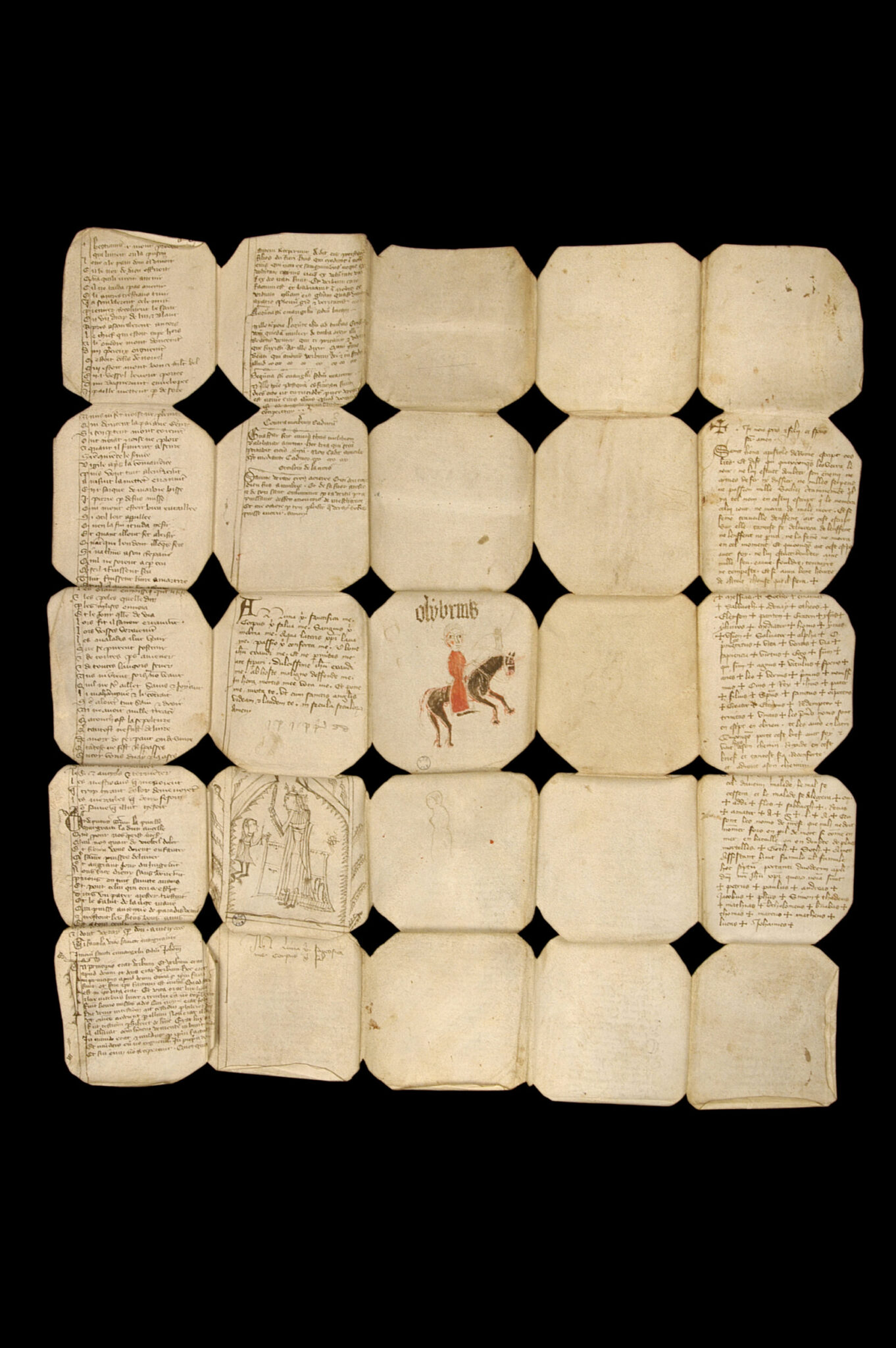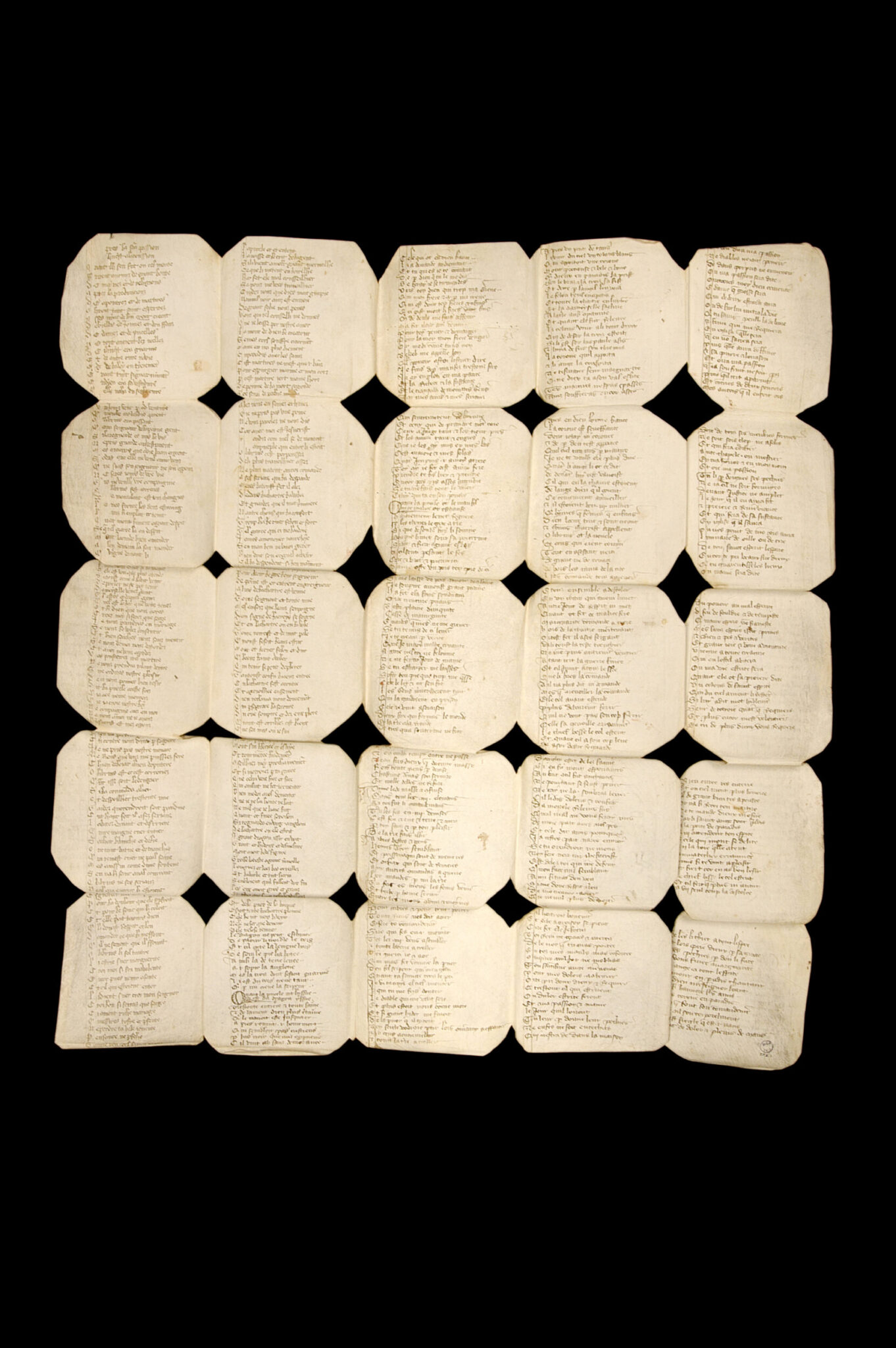From November to March, Mucem hosts Les Procès du Siècle! On the program: a cycle of fascinating debates around the evolution of society, struggles and minorities, especially gender. Themes at the center of Madmoizelle’s editorial line, which is a partner of the event.
These debates are always based on “exhibits”, objects from the Mucem collections. Madmoizelle’s editors joined forces with museum curators to decipher six of these exhibits: objects that, as in a real trial, are much more talkative than they appear… Today we take a look at a very fitting Breton wrestler costume!
Women have always been under the yoke of patriarchy. But some periods have been more violent than others, as evidenced by the (too many) legends, in which however a large number of women have taken refuge, unknowingly internalizing male violence in its many forms. This new clue partially reveals it, a small mysterious object with an equally intriguing name: “the manuscript of birth”.

An amulet to protect women in childbirth
It’s a small object that we’ve been trying, for a while, to keep out of sight of others. Its very existence gave it magical power and, above all, its usefulness came from a phase of life that men did not want to see and during which women often hid: childbirth. It is a discreet object, yet so powerful, a kind of amulet that is supposed to protect women during childbirth. It’s dreamy, isn’t it? Enclosed in a golden leather box, this “manuscript”, a sort of parchment made up of many small squares, tells a story which, in principle, does nothing to reassure women about to give birth.
The story of Sainte-Marguerite, martyred for refusing a man’s advances
The “manuscript of the birth” tells the story of Saint Margaret, martyred around the year 305 for refusing to renounce her Christian faith. Legend has it that Marguerite converted to Christianity before being banished by her father, a pagan priest. A history already marked by the yoke of patriarchy (which, unlike religion, wasn’t really an option at the time). A story that could very well have ended there, if the prefect of the city of Antioch, in Syria, where the Saint came from, hadn’t fallen in love with her, forcefully insisting that she become his wife, or his mistress (even at the cost of giving him the choice…). After having confronted her father during her conversion, she rejects the advances of the prefect, who, not satisfied with this negative response, orders her to be arrested, whipped, tortured and finally annihilated. A perfectly institutionalized violence which, at the time, did not upset many. A life marked by oppression and patriarchal violence for this Sainte-Marguerite who had not yet asked anyone for anything.

But you’re probably thinking: okay, but what does this have to do with childbirth? Sainte-Marguerite has long been considered the Saint capable of saving and helping the needy, especially during childbirth. A role that she has been assigned to him since a romantic episode has come to complete the story of her life. Indeed, the legend has been modified and enriched with a game-changing anecdote: Marguerite would have been swallowed by a dragon which she would have managed to free herself from with the help of a cross which allowed her to extract herself from her belly. of the dragon, found dead next to her (the story does not say whether this mythical episode took place before or after her beheading… but after all, legends don’t necessarily have to be logical!). It is this episode of the expulsion from the belly of the dragon that justifies her later being considered the saint who accompanies mothers about to give birth.
Women can create their own stories… and save themselves
However, history does not make us dream, and one logically wonders how this legend has reassured mothers about to give birth for centuries. However, this story was built from the ground up by men, in a hurry to control women and their bodies (like pretty much the rest of the world?). Women couldn’t save themselves, and did they really need an amulet to succeed in what they had been able to do since the dawn of time: give life?
Finally, one can also choose to interpret the holy story of Margaret as the definitive liberation from the patriarchal yoke that weighed upon her: by piercing the belly of the dragon, and managing to escape from it, she is the domain of men, including those who have tried to control her , who’s down.
This exhibition is presented as part of the conference “Can Women Save the World?” », which took place on Saturday 21 January 2023 at Mucem, as part of the Process of the Century.
Source: Madmoizelle
Mary Crossley is an author at “The Fashion Vibes”. She is a seasoned journalist who is dedicated to delivering the latest news to her readers. With a keen sense of what’s important, Mary covers a wide range of topics, from politics to lifestyle and everything in between.




